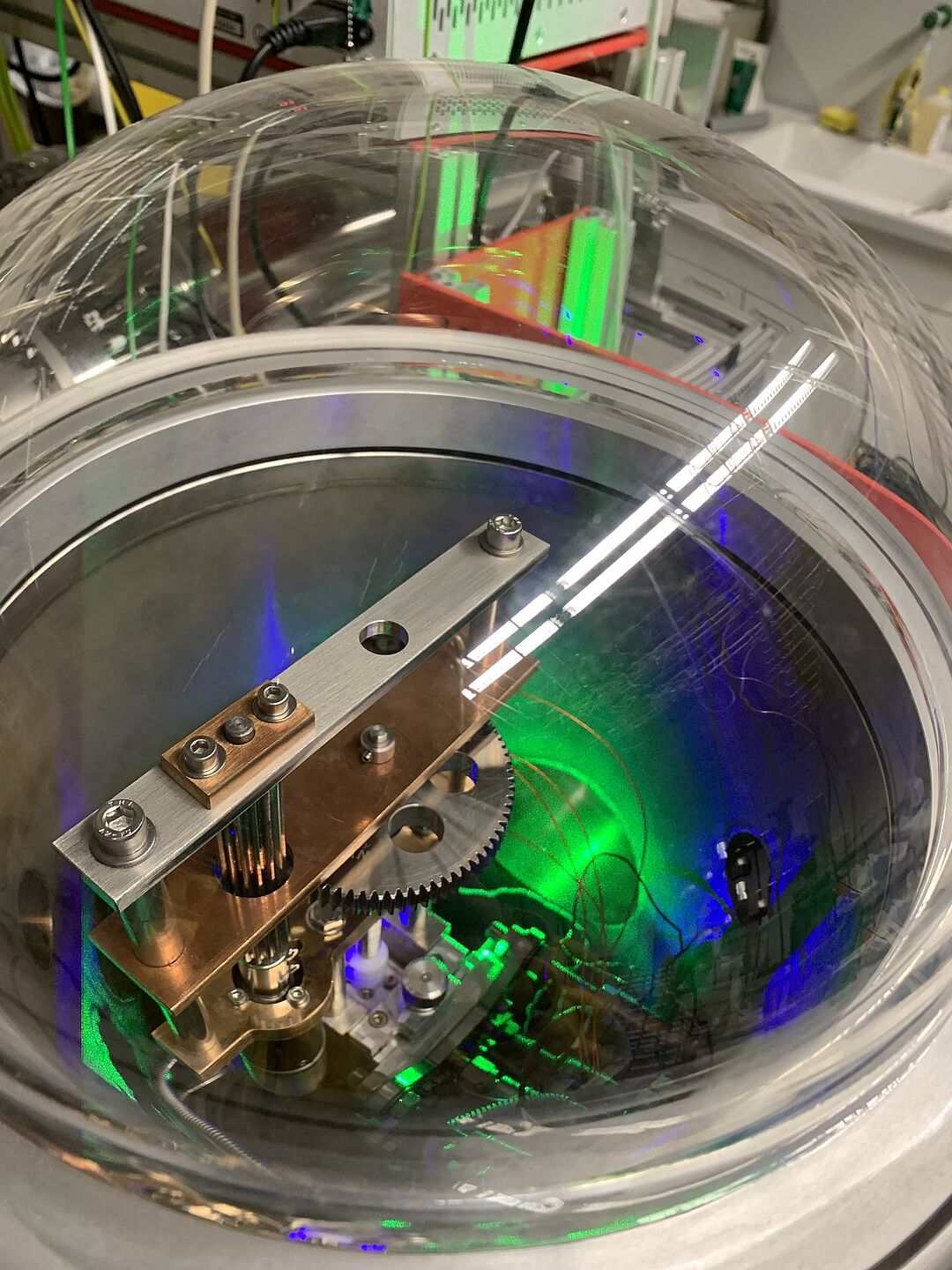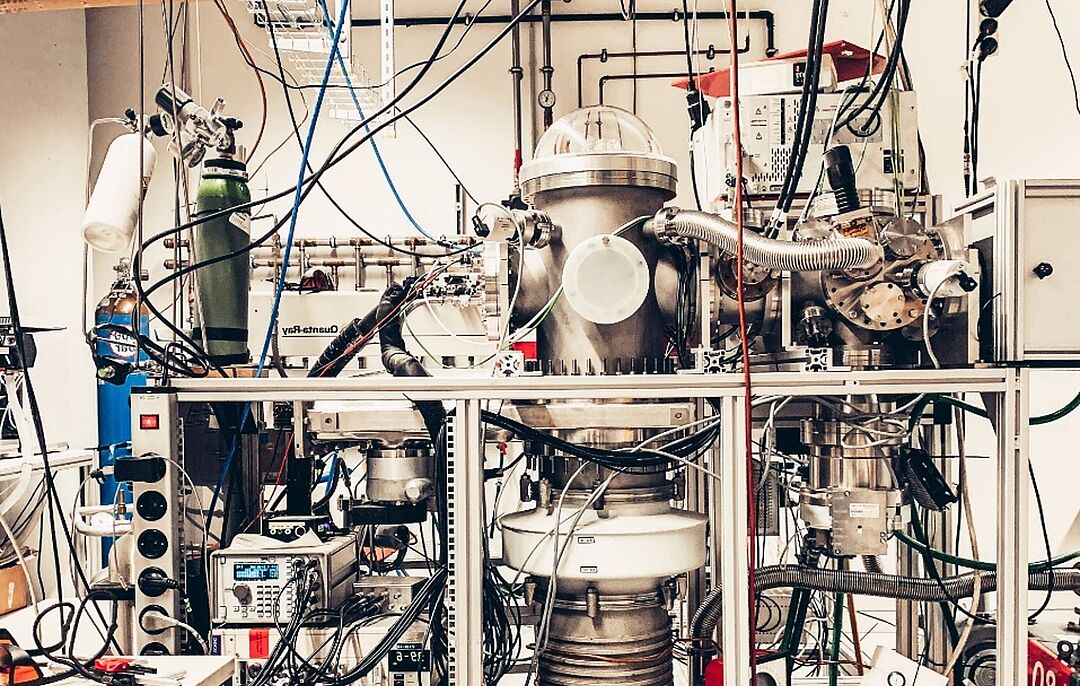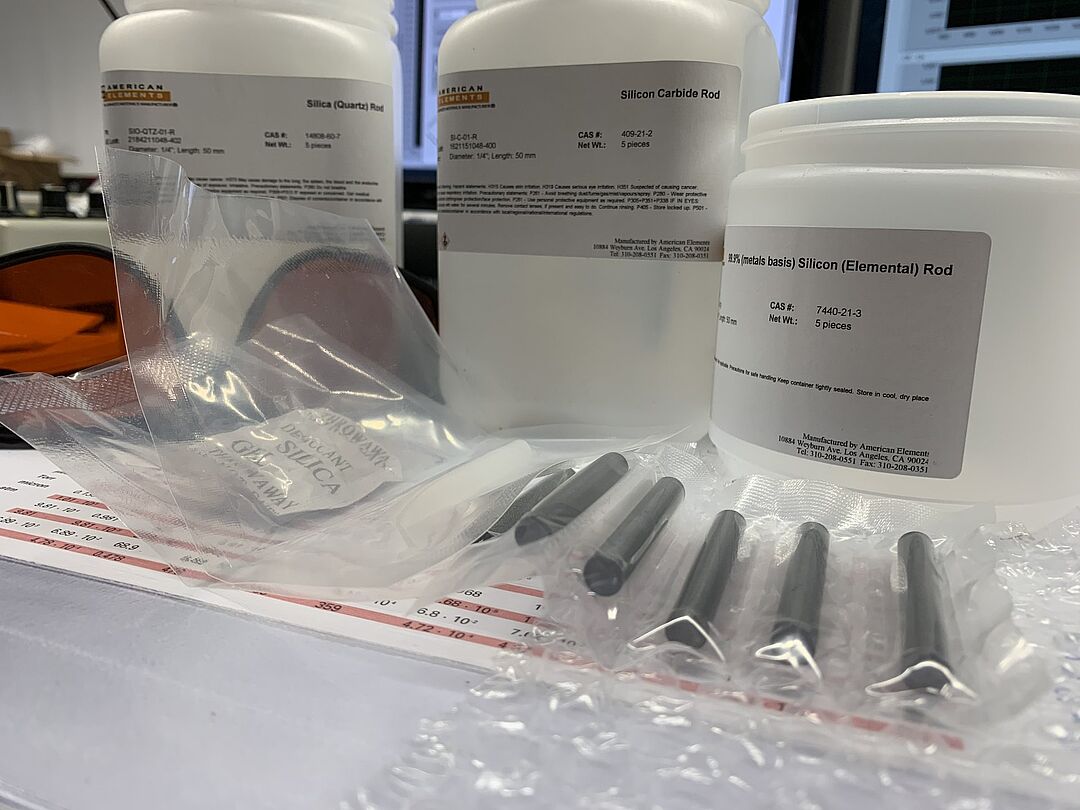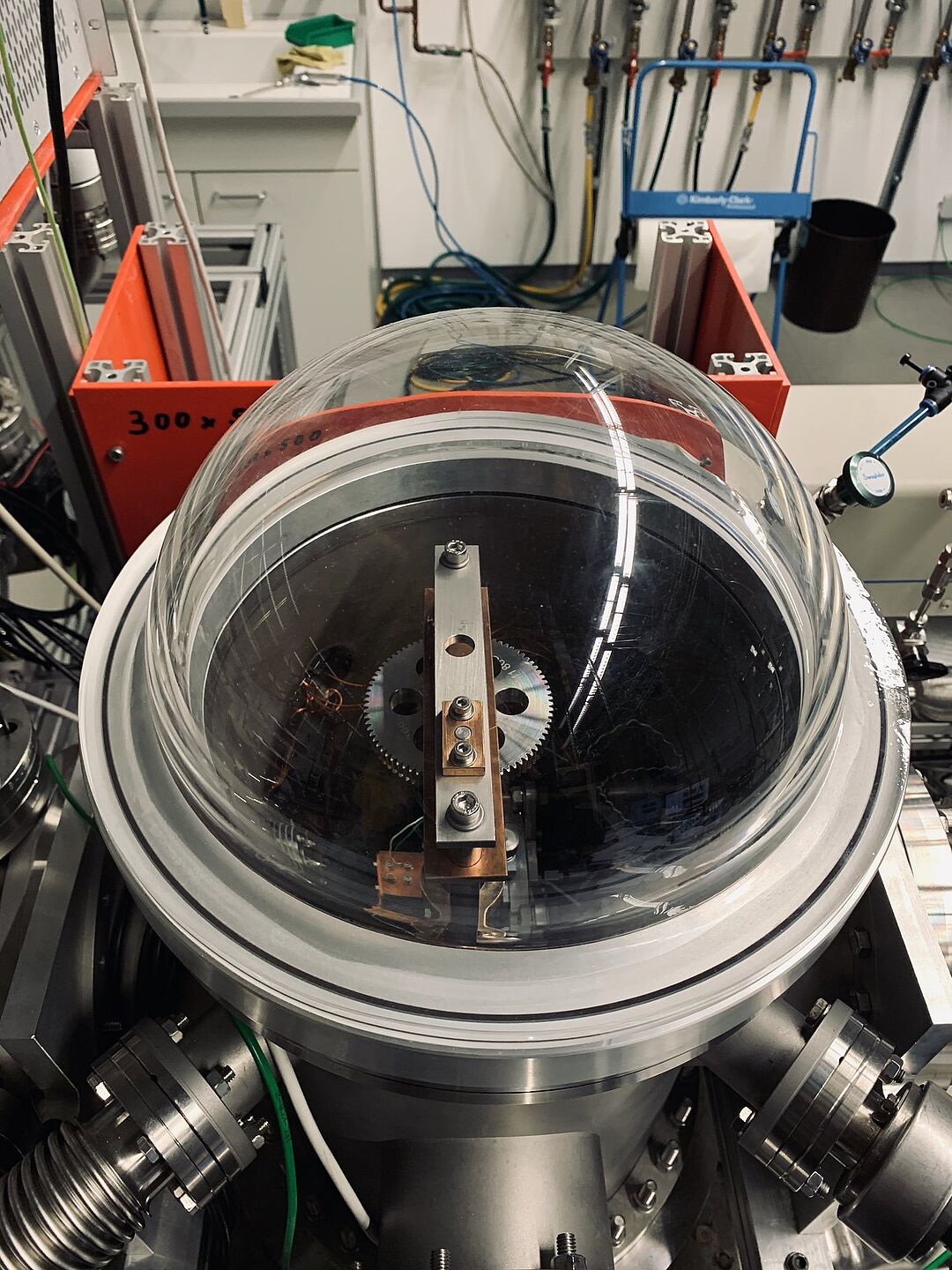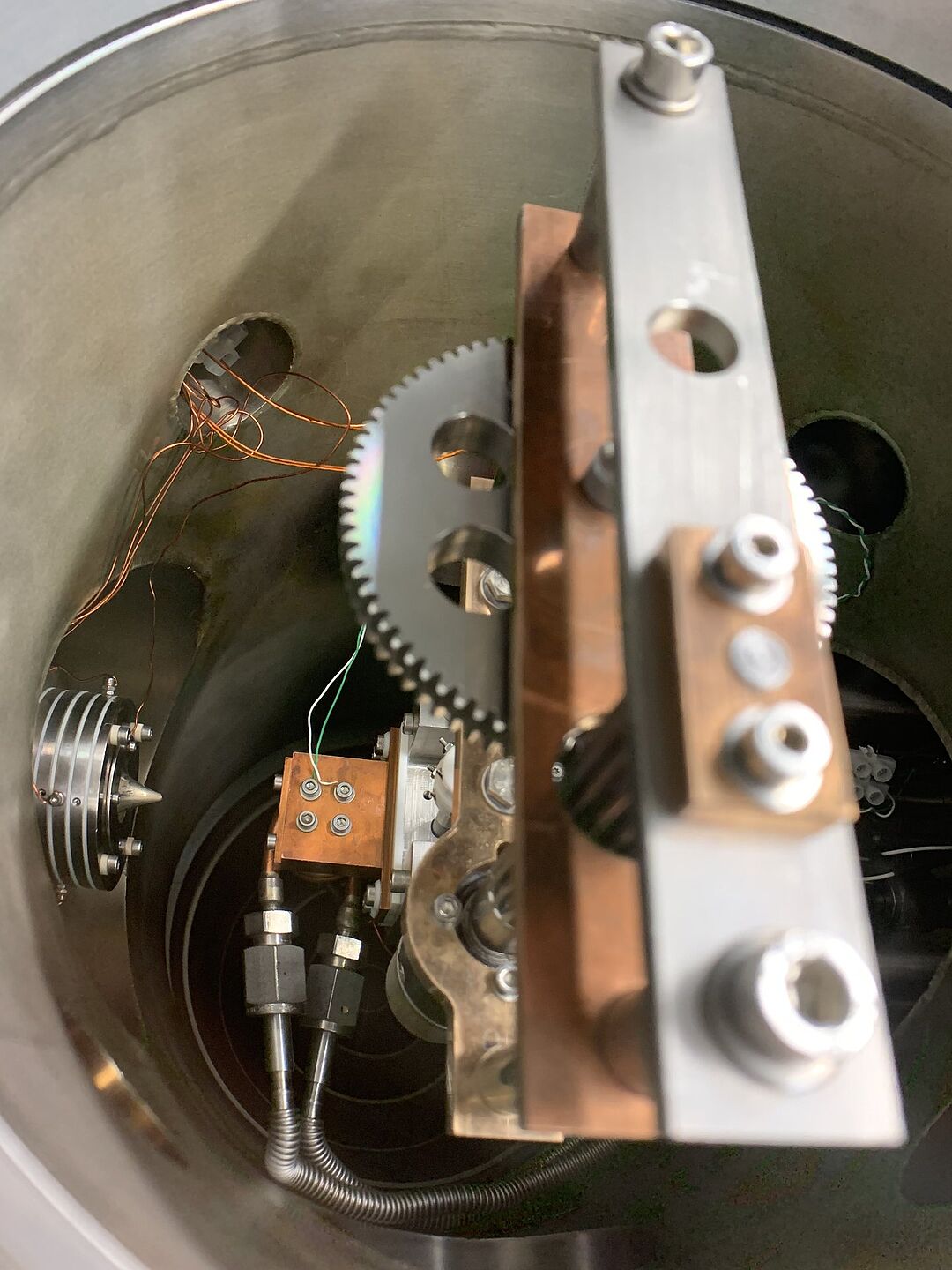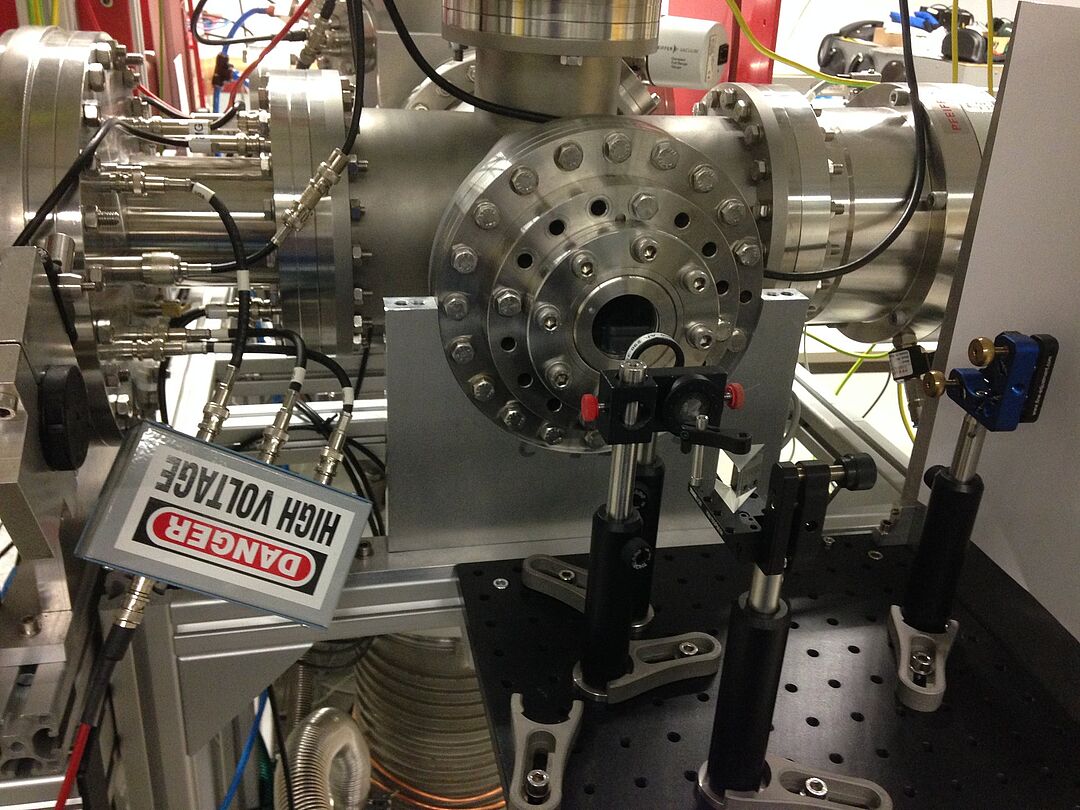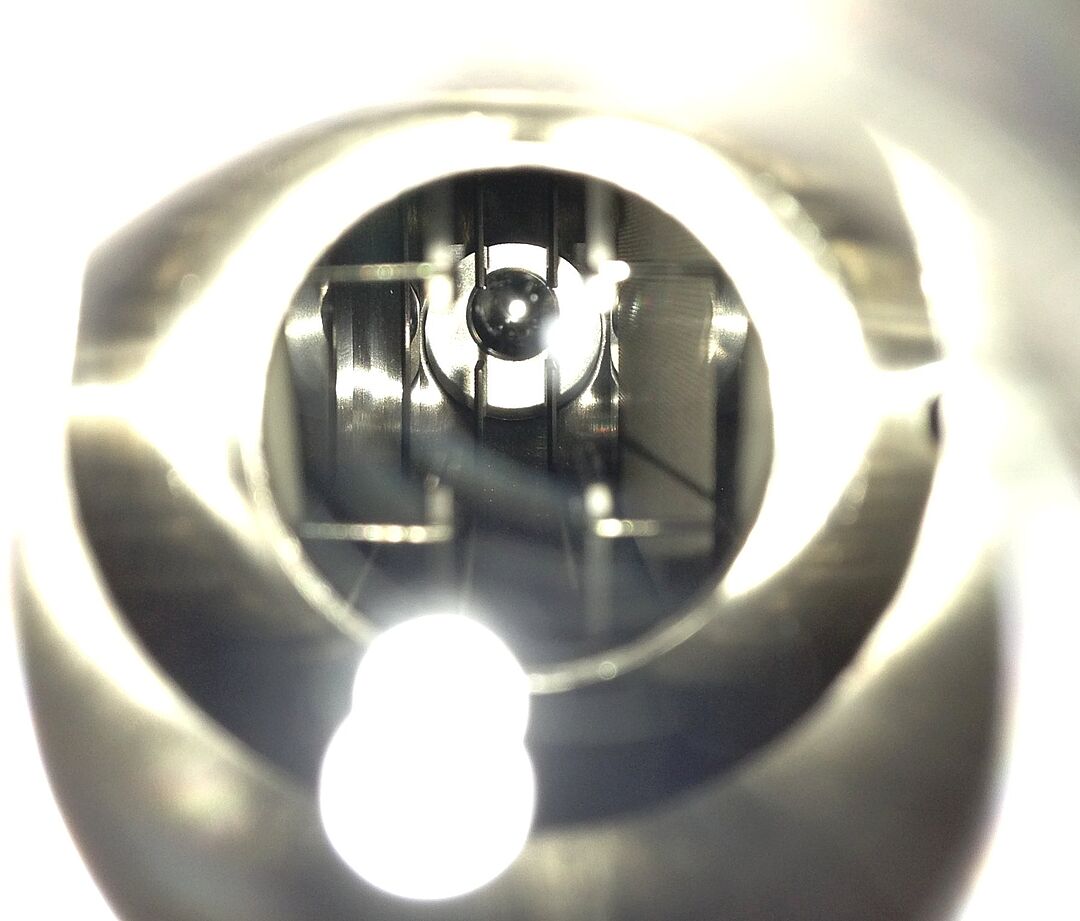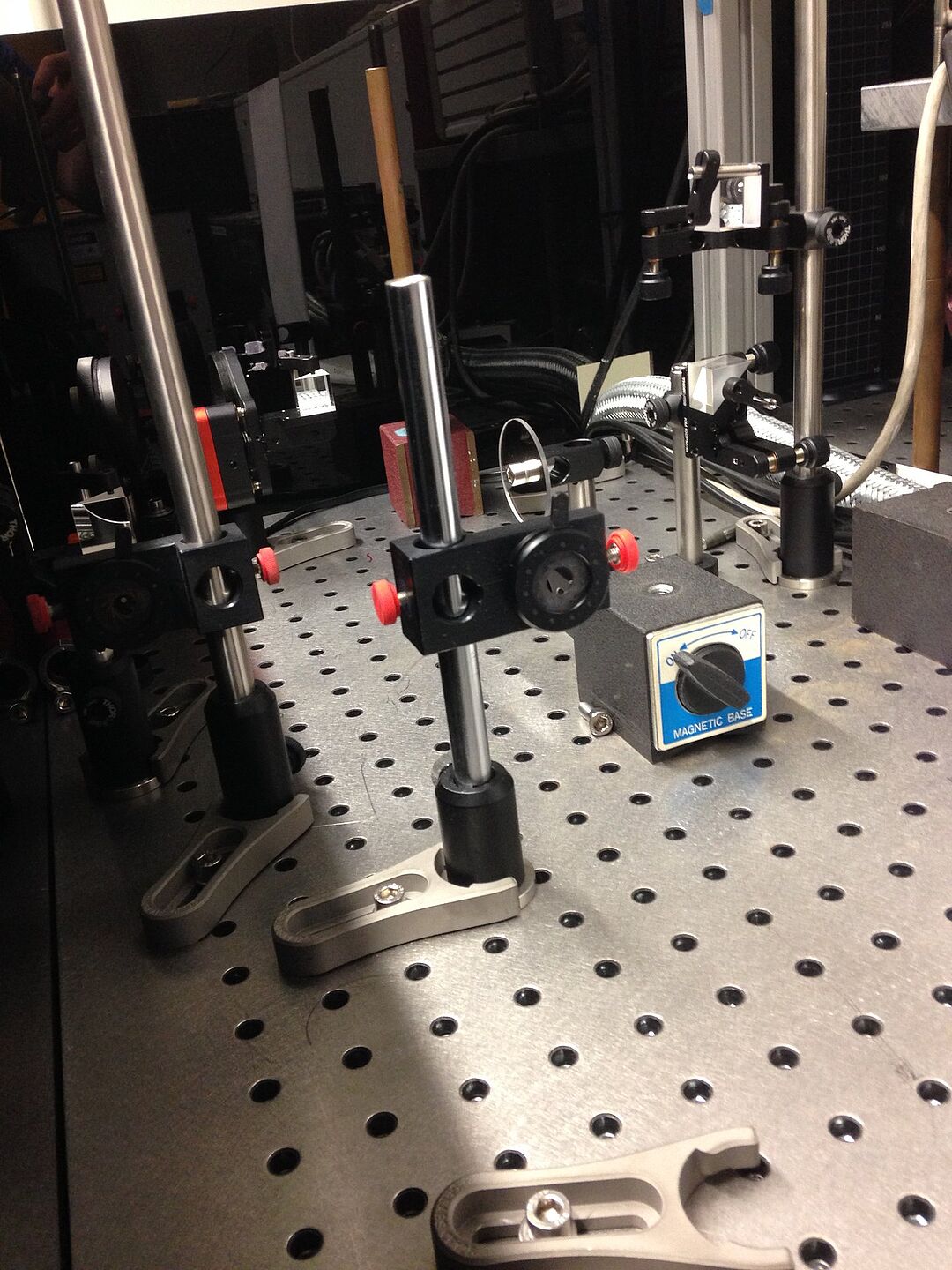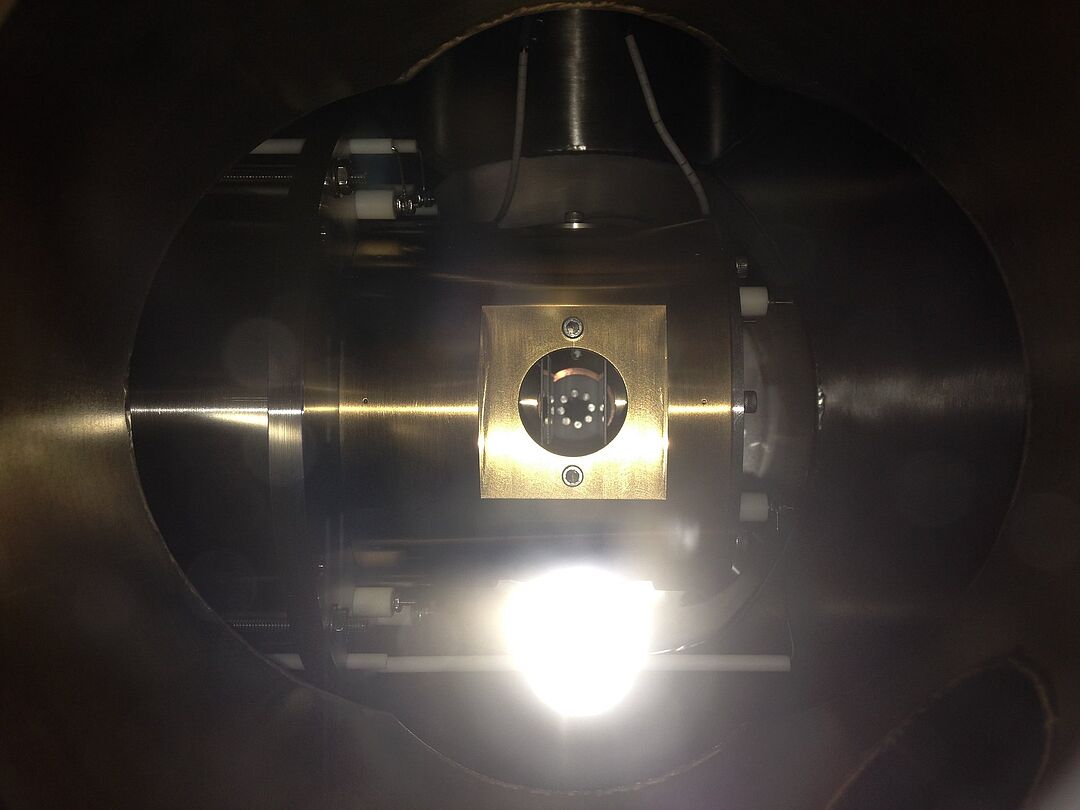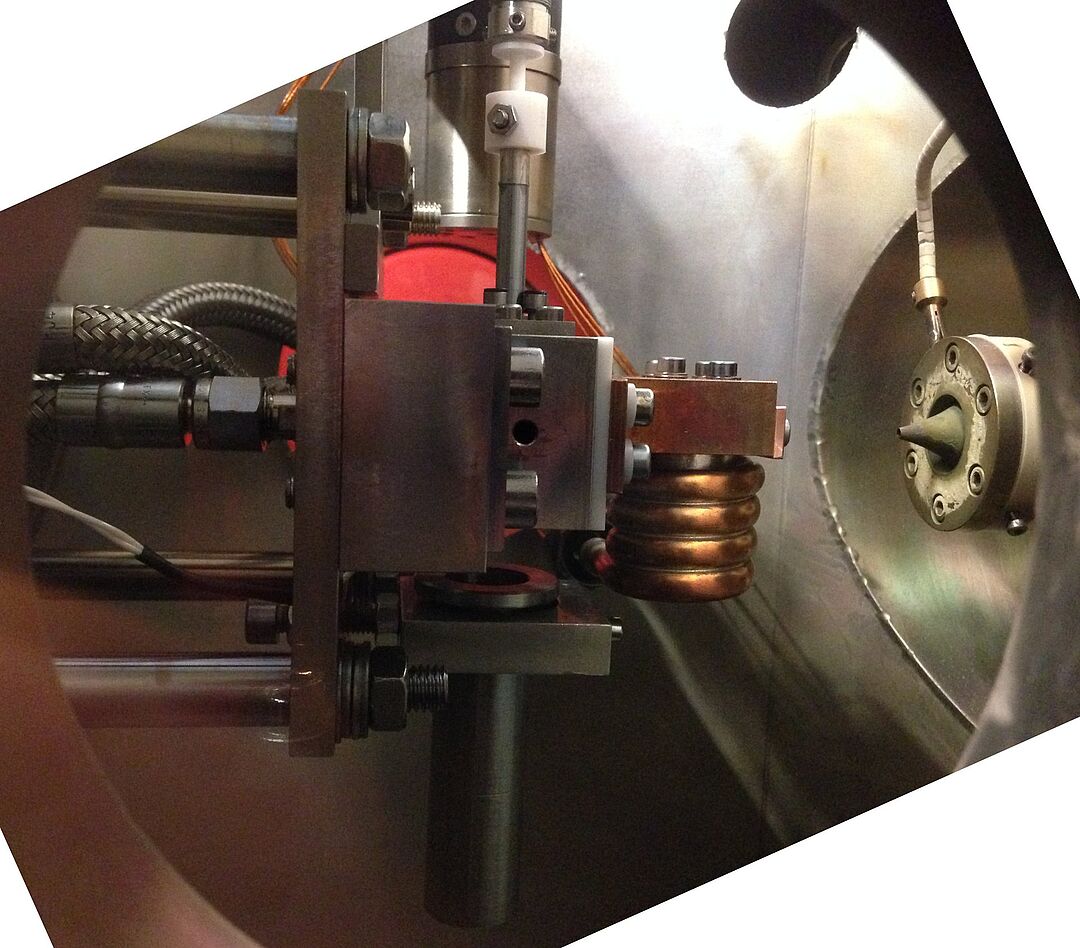LVAP Experiment
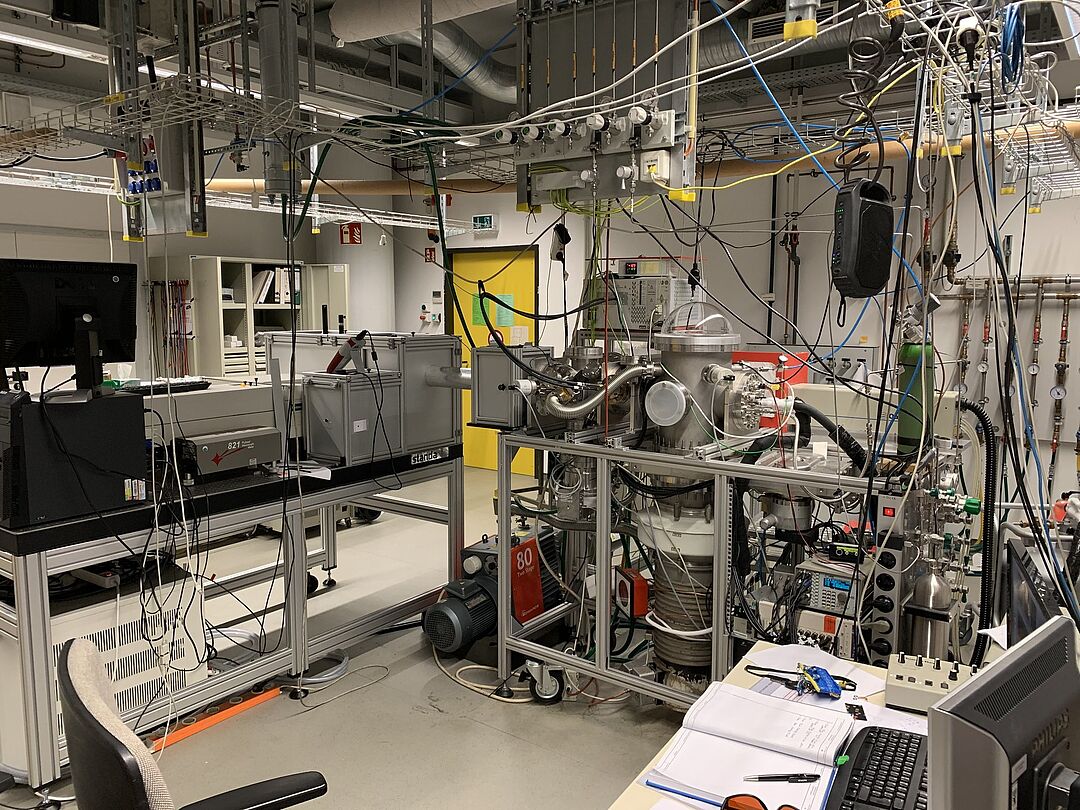
The Laser Vaporization (LVAP) experiment is used to study the electronic structure of inorganic clusters in the gas phase by action spectroscopy. It is a tandem mass spectrometer coupled to a laser vaporization source and mainly consists of three parts: (i) a source chamber where clusters are generated via laser vaporization of a rotating sample rod, (ii) a quadrupole mass selector (QMS) for filtering the cluster or ion of interest, and (iii) an interaction chamber where the clusters are photodissociated at the extraction region of a reflectron time-of-flight (ReTOF) mass spectrometer.
Clusters and molecules are generated by irradiating a rotating rod (such as gold, silicon, or quartz) with a high-energy pulse from either a Nd:YAG (Spectra-Physics, QuantaRay) or a Nd:YLF (Topag, Q2-E20-1053) laser. The resulting plasma expands together with a pulsed buffer gas through a nitrogen-cooled, conical nozzle towards a skimmer, after which the ions pass through the QMS. Here, the desired species is mass selected and guided by a lens system into the extraction region of the ReTOF. A beam from an optical parametric oscillator laser (Horizon, Contiuum Powerlite) is spatially and temporally overlaid with the ion beam and can be scanned between 192 to 2400 nm. Wavelengths with energies resonant to electronic transitions induce photodissociated fragments, which are measured by the ReTOF. The intensities of all photofragments over the spectral range yields the electronic photodissociation spectrum, which approximates the lower limit of the absorption cross section of the parent molecule. Finally, quantum chemical calculations are employed to interpret the experimental observations.
silicon containing clusters, gold
